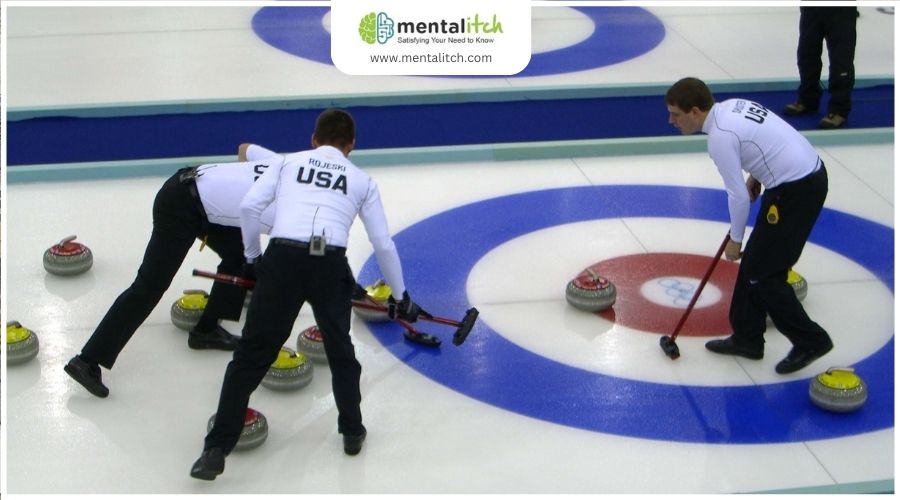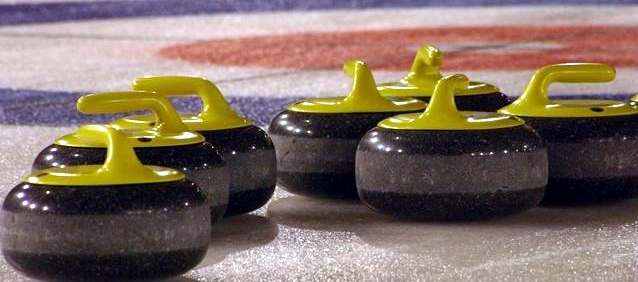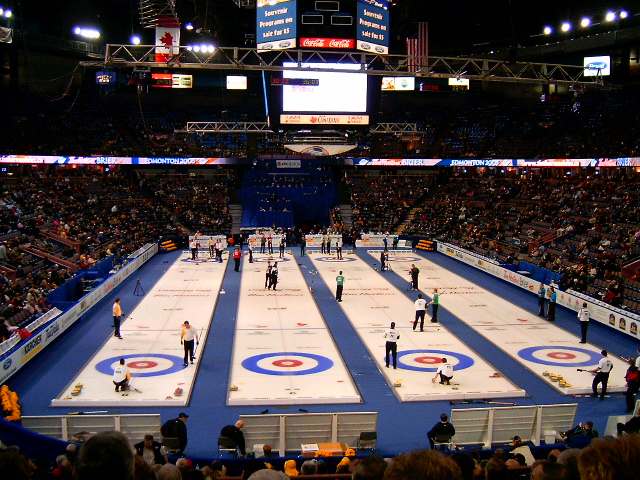Curling, often seen as one of the more unique sports in the Olympic lineup, carries a rich history that stretches back centuries. Known for its strategic gameplay, which some affectionately dub “chess on ice,” this sport combines skill, precision, and teamwork in ways few other athletic competitions can.
Originating from the cold, wintry landscapes of Scotland, curling has evolved from a pastime on frozen ponds to a highly competitive sport that has captured the attention of millions around the world. In this article, we’ll take a closer look at the origins of curling, its journey to becoming an Olympic sport, and the unforgettable moments that have defined its legacy.
The Origins of Curling
The sport of curling traces its roots back to early 16th-century Scotland, where it was first played on frozen ponds and lochs during the winter months. The earliest recorded evidence of curling comes from a notary in Paisley, who, in 1541, documented a challenge between a monk at Paisley Abbey and a relative of the abbey’s abbot. This record highlights not only the age of the sport but also its deep-seated origins in Scottish culture.
Curling stones from this era, some of which bear dates as early as 1511, have been discovered with handles, indicating that the basic elements of curling have remained remarkably consistent over the centuries. These ancient stones reveal the sport’s primitive equipment, contrasting sharply with the high-tech, carefully crafted stones used in today’s competitions.
The first official curling club, the Royal Caledonian Curling Club, was established in Scotland in 1838. Initially named the Grand Caledonian Curling Club, it sought to formalize the rules of the sport, which until then could vary significantly from one region to another. This club played a crucial role in spreading curling’s popularity beyond Scotland’s borders, helping to establish it as a sport recognized for its skill and strategy.
Curling as an Olympic Sport
The Olympic debut of Curling dates back to the first Winter Games in 1924 in Chamonix, France, where it was introduced as a demonstration sport. Despite this early appearance, curling would not secure a permanent spot in the Winter Olympics for many years.
For much of the 20th century, curling hovered on the periphery of the Olympic program. It made sporadic appearances as a demonstration sport, notably at the 1932 Games in Lake Placid and again in 1988 in Calgary. These events allowed curling to showcase its unique blend of strategy, skill, and teamwork on an international stage, slowly building a case for its inclusion as an official sport.
The turning point came in the late 1990s when the International Olympic Committee (IOC) formally recognized curling’s growing popularity and the sport’s international governance by the World Curling Federation. This recognition paved the way for curling to be included as an official Olympic sport at the 1998 Winter Olympics in Nagano, Japan. The decision was a landmark moment for the curling community, validating centuries of tradition and the sport’s modern appeal.
Since its official inclusion, curling has become one of the Winter Olympics’ most eagerly anticipated events, attracting a dedicated following and increasing participation rates worldwide. The sport’s strategic depth, combined with the precision and skill required, has endeared it to audiences and athletes alike, ensuring its place in the Winter Olympic program for years to come.
The Rise of Professional Curling Tournaments
In Canada, where curling found a second home thanks to Scottish immigrants, the sport quickly took root. The Montreal Curling Club, formed in 1807, is recognized as the oldest sports club still active in North America. Canada’s passion for curling led to the formation of numerous clubs across the country, making it a central hub for the sport’s development. The establishment of the Canadian Curling Association in 1935, now known as Curling Canada, further professionalized the sport, overseeing its growth and organizing national championships.
The latter half of the 20th century saw the sport’s professionalization accelerate with the creation of structured competitions and leagues. The World Curling Championships, first held in 1959 for men and 1979 for women, brought international teams together, fostering a competitive spirit and camaraderie among curlers worldwide.
The introduction of the Grand Slam of Curling in 2001 marked a significant development in professional curling. This series of elite tournaments offered substantial prize money and attracted top teams from around the globe, elevating the sport’s profile and providing a platform for professional curlers to compete at the highest level.
Today, professional curling leagues and clubs continue to proliferate, with national and international competitions drawing in audiences and participants from all corners of the globe. These organizations have been instrumental in elevating curling to a professional sport, showcasing the strategic complexity and athletic skill it demands.
Curling in the Modern Era
The modern era saw curling’s governance become more structured with the establishment of the World Curling Federation (WCF) in 1966. This body played a crucial role in standardizing rules and organizing international competitions, such as the World Curling Championships, which became key events in the sport’s calendar. The WCF’s efforts to promote curling worldwide contributed to its inclusion in the Winter Olympics as a full medal sport in 1998, a landmark event that boosted curling’s international profile.
Curling’s appeal in the modern era is also due in part to its unique blend of strategy, teamwork, and physical skill, often referred to as “chess on ice.” This has attracted a diverse following, from those who appreciate the cerebral aspects of the game to those drawn to its social and competitive nature.
The advent of televised curling matches and the rise of social media have further propelled the sport into the spotlight, allowing fans to follow their favorite teams and players more closely than ever before. The introduction of mixed doubles curling, which made its Olympic debut in 2018, has added a dynamic new dimension to the sport, emphasizing speed, agility, and partnership.
Interesting Facts About Curling
Curling, with its unique blend of strategy, skill, and tradition, holds many intriguing aspects that even its fans might not know. Here are ten lesser-known, interesting facts about the sport that shed light on its peculiarities and charm:
- Two Sets of Stones – Each curling stone is made from a rare type of granite found only on Ailsa Craig, an island off the coast of Scotland. This granite is prized for its density and resistance to wear.
- The “Spirit of Curling” – Curling is known for its high level of sportsmanship, often referred to as the “Spirit of Curling.” Players are expected to call their own fouls, congratulate their opponents for good shots, and maintain a friendly demeanor throughout the game.
- Sweeping Science – Sweeping in curling is not just for show; it’s a science. The action of sweeping heats up the ice, reducing friction and allowing the stone to travel further and straighter. Advanced teams often use sweeping techniques strategically to control the stone’s path and distance.
- Olympic Comeback – While curling was first introduced in the Olympics in 1924, it wasn’t until 1998 that it was officially added back into the Winter Olympic Games, highlighting its growing popularity and international appeal.
- Outdoor Origins – Originally, curling was played outdoors on frozen lakes and rivers. It wasn’t until the mid-20th century that the sport transitioned indoors, allowing for more precise playing conditions and year-round play.
- Nighttime Curling – In Scotland, during the 16th and 17th centuries, curling matches were often held at night, with bonfires along the sides of the playing area to provide visibility.
- Unique Terminology – Curling has its own unique terminology. For example, the playing surface is called a “sheet,” the target area is known as the “house,” and a game is referred to as a “bonspiel.”
- Curling Stones’ Lifespan – A well-crafted curling stone can last for several decades, even up to 100 years, making them valuable and often reused pieces of equipment in the sport.
- First Women’s Curling Club – The first known women’s curling club was formed in Scotland in 1843, proving that the sport has long been inclusive and enjoyed by both men and women.
- Roaring Game – Curling is sometimes called “The Roaring Game” due to the sound the stones make as they travel across the pebbled ice surface. This nickname captures the dynamic and engaging nature of the sport.
Conclusion
Curling may be seen by some as an “odd” Olympic sport, but its uniqueness is precisely what captivates and delights. Whether it’s the strategic gameplay, the teamwork, or the spirited community, curling has a way of drawing people in and holding them close.



